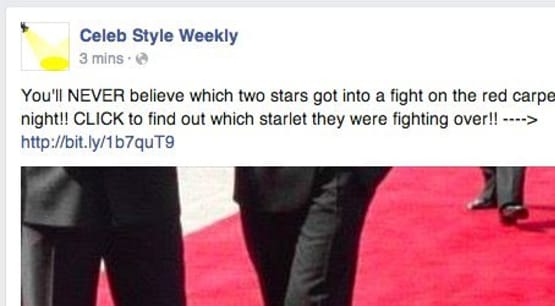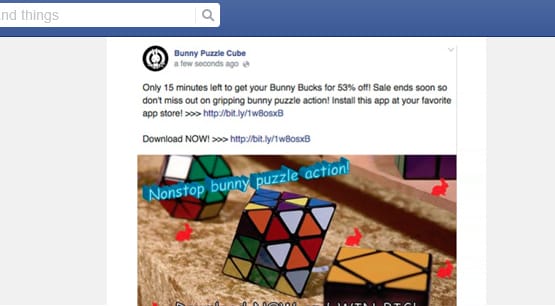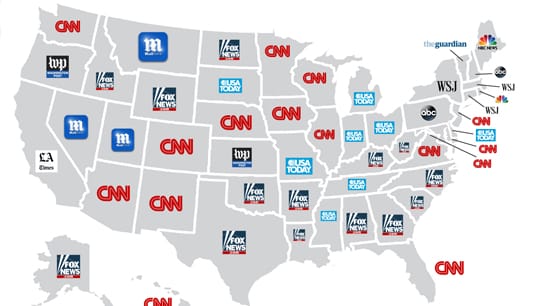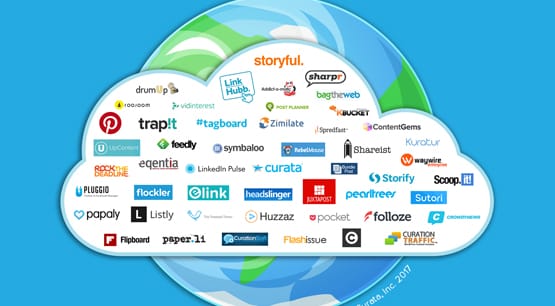15 Reasons People Aren’t Seeing Your Facebook Posts
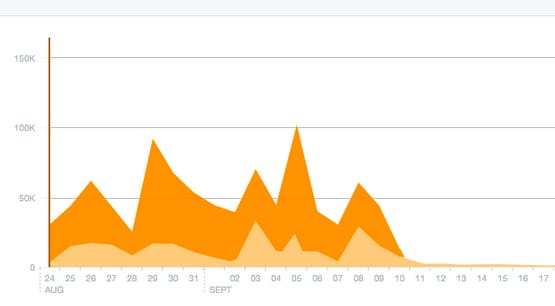
In the wake of the 2016 elections and a lot of loss of trust in the platform, Facebook has been making a lot of changes. Some of the most recent changes have shifted the focus of the site even further away from organic content feeds from brands, and more towards connecting with friends and family.
Couple this with the ongoing growth of the site as a whole, the increasing press of advertising, and the natural decline in organic reach, and you have a pretty unwelcoming environment. It’s difficult to get your posts seen, and if that brief visibility isn’t enough to hook your followers, the failure tends to cascade.
Why might you not be reaching your followers, and what can you do about it?
1. You Don’t Post Often Enough
Part of the Facebook algorithm – EdgeRank, for those who aren’t familiar – is timing. The more recent a post is, the more likely it is to be seen. The older a post is, the less chance it has of showing up in the news feed compared to newer posts.
If you’re not posting often enough, your posts are aging out of the visibility space and you’re not putting anything in there to refresh your presence. Since another part of EdgeRank is recency of interactions, you end up losing out because no one is engaging with posts they aren’t seeing. If you’re posting only 2-3 times a week, you need to post more often.
2. You’re Posting Too Often
The flip side of the coin is posting too often. There are a lot of potential downsides here. If you’re posting too often, you’re likely not posting high quality content. Your users are still only seeing a few posts per week, but now your engagement is spread out among more posts, so they don’t do as well individually, so your account doesn’t benefit as much.
Unless you’re a big news institution like NPR, a magazine with a lot of volume like PC Magazine, or some other source of a ton of valuable content, you shouldn’t post more than once per day. Generally that additional post won’t improve anything, and might even lead to feed spamming.
3. You Aren’t Encouraging Engagement
Another big part of EdgeRank – the biggest, arguably – is engagement. Facebook prioritizes showing posts that get a lot of engagement. Posts that get a lot of engagement quickly will be shown to a larger audience, and continue to be shown until the engagement tapers off and the post ages out. Likewise, the more engagement you get from your audience, the more those audience members will see posts in the future.
If you’re not getting engagement, you should be encouraging it. However, you can’t simple just ask for engagement – see number eight on this list – so you need to be craft with it. Ask questions, ask for feedback, run caption contests, and otherwise encourage engagement from people without just asking for likes or shares.
4. You’ve Been Reported for Spam
Being reported has three major effects. The first, obviously, is that if your post is found to be in violation of whatever rule the user was trying to report it for, you’ll find the post removed and you might find action taken against your account, up to and including suspension. Second, that user will be less likely to see your posts in the future, up to and including never seeing them again. Of course, why they follow you if they don’t want to see your posts is another issue entirely.
The third effect is that it makes Facebook inherently share your posts less often, even if you haven’t been found in violation of any rule. It’s not a major decrease, but it can contribute to an overall decrease. It’s worth avoiding contentious issues and rule-breaking content just to avoid exacerbating the issue.
5. You’re Not Paying for Exposure
At this point, it’s become hard enough to use Facebook organically that many businesses are starting to think of it as a pay-to-play platform. In fact, Hubspot even recommends that you treat Facebook as a paid ad platform.
At this point, it’s virtually impossible to gain any major traction as a completely free user. You can try, and you might succeed if your end goal is to be on the same level as local plumbers and other small businesses, but that’s about it. If you want to get a huge following, you’re going to need to pay for the exposure.
6. You’re Not Using Media for Posts
The final element of EdgeRank, if you read the link above, is the type of post. Media posts fare better by default than text-only posts and even link posts. Pure text posts are almost never worthwhile. At the very least, you should attach some kind of relevant image to the post.
The best kinds of posts to make on Facebook are videos and live videos, which are understandably hard to make. Video has a high barrier to entry, and a good video is even harder to make. Ideally, you’ll be able to take advantage of video with a little investment, and that video can go a long way towards improving your post visibility.
7. You’re Posting Too Much Clickbait
Facebook has been demoting the visibility of clickbait for years, but they keep making additional changes to make clickbait harder and harder to see. If you’re the kind of person who habitually makes clickbait-style titles (“Wow! You won’t believe the kind of results Susan got with these simple household products!”), you’re going to have a tough time adapting.
Clickbait might work, for a certain definition of work, but it’s the transient sort of value that doesn’t lead to conversions or to any long-term growth. Once you dig into clickbait, trying to move away from it means your numbers drop, and that just makes it harder to stop with the bad techniques.
8. You’re Asking For Engagement
At the end of 2017, Facebook changed their algorithm slightly to demote “engagement bait” content. You know what clickbait is; engagement bait is similar. Maybe the title and description of a video are fine, but it has a line like “Tag this with someone who NEEDS to see this video!” That’s engagement bait, and it’s just as bad as clickbait in Facebook’s eyes.
As you might expect, this extends to each kind of engagement, from comments and shares to reactions and tags. It also applies to more blatant attempts at getting engagement you don’t deserve, i.e. just asking for it. In the past, saying “hey, like this post please?” would work just fine. These days, it’s a little too direct and Facebook doesn’t like it.
9. You’re Overly Promotional Too Often
It’s okay to be self-promotional on occasion, but you don’t want to be to promotional too often.
The problem here is that (as in number 13 below) the solution was often to post, link to, or share content from other sites to fill out between your own content. That used to be fine, but Facebook is dealing with a critical mass of Too Much Content, and they’re starting to demote content that isn’t really relevant to your brand or audience.
Curating content is still good and still an avenue to better engagement, but it’s getting to be a better idea moving forward to promote more of your own non-sales content. Don’t constantly share contests or sales or product, but write relevant and interesting blog articles to post instead.
10. You’re Posting Banned Links
I’m using this one as a bit of a shortcut. Obviously, doing anything that’s against the Facebook rules will get you sanctioned in some way, often to the detriment of your post visibility. Posting banned content or banned links, however, is particularly bad.
Sometimes, when you try to post a link, Facebook will refuse to link it. You can generally still post the URL without an attached preview, but you’re basically just running into a soft word filter. Facebook would greatly prefer you didn’t try to promote something they don’t want on their site, so they’ll give that post less visibility. If you do it a lot, well, there go all your posts.
11. You’re Not a Trusted News Source
This one is new. In the wake of all of the problems with fake news, Facebook has starting putting algorithmic changes in place to try to hinder the spread of false narratives while promoting news that comes from a reputable source. Sounds fine, right?
The problem here comes from “small” news sites or legitimately small sites trying to become news sites. For every Kotaku, there’s a Culture of Gaming. Everyone wants to break into their favorite industry, and they try to do it by covering news. Unfortunately, since these sites aren’t big name news sources with trusted review processes and fact-checking, they don’t pass muster for Facebook’s filters.
What this means is that you need to focus more on evergreen content, analysis, and value in the content rather than following the news and trends. Besides, how often are you breaking a story before it’s picked up by the 100s of more powerful news sites anyway?
Related to the post above, Facebook is not above showing a bit of bias in their algorithm, so long as that bias is, well, fair. They aren’t going to start filtering republican perspectives and promoting democratic ones, or anything. What they will do, however, is work to filter the “news” coming from Russian propaganda mills and other extremely untrustworthy sources.
If this sounds like Facebook is filtering out your views, well, that just means you need to step back and re-evaluate your views. If you’re believing some content writers in Moscow over fact-checkers in Washington, maybe you need a change in perspective.
13. You’re Sharing Too Much External Content
I mentioned this in passing above, but I’ll dig into it more here. There’s just so much content on Facebook that you’re competing for only a few available organic slots in each person’s feed. When you have this much competition, and you’re only likely to get a few posts through, what do you want those posts to be?
The old method of curating content leads to a lot of engagement on “your” posts, but on content that is not yours. Instead of letting all of that engagement slip away, focus more on posts made via media you control, either through your own social networks or your blog.
14. You’re Automating Cross-Posting Poorly
Automation is one thing I like, enough to make an entire site based around it, but it’s also easy to do poorly. Facebook has some built-in cross-posting features for both Twitter and Instagram, but those posts tend to get lower than normal engagement. They simply don’t match the formatting and best practices for Facebook, since you created them for Twitter or Instagram.
Whenever you cross-post content or do any sort of automation, try to make your posts look as natural as possible. You don’t want your users to suspect automation is behind everything, or else they’ll be less likely to engage with “the robot that runs the account.”
15. You Don’t Have Any Followers
If you don’t have many followers, you won’t get much reach. I’ve had this happen a few times; I go to look at the metrics for someone who comes to me for help, only to find their account only has maybe a few dozen followers. At a certain point, you just can’t expect much out of a small audience. Invest in some ads, grow your following, and then worry more about techniques.









